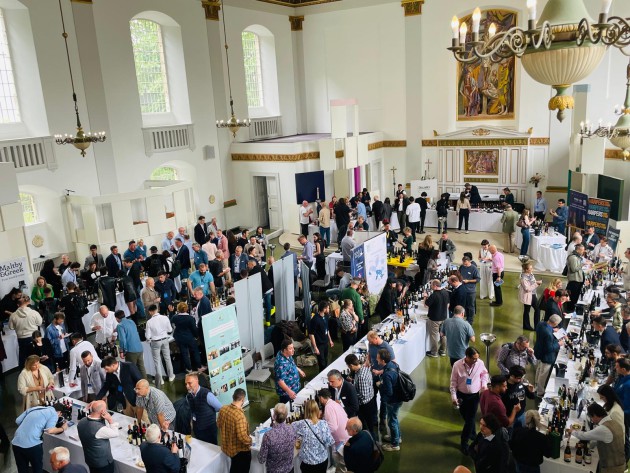
CEE tasting delivers impressive growth
With the current buzz in the wine world shifting towards Europe’s less well-known territories, it was perhaps no surprise that The Ultimate CEE Wine Fair 2.0 in London this week (9 June) was a packed affair. Attendance was 30% up for this, it’s second outing, with 350 trade professionals descending on St John’s Church in Waterloo for a taste of Central and Eastern Europe’s myriad styles of wine.
The event, which by the organisers own admission takes a somewhat generous geographical approach within its ‘CEE’ remit, added Poland, Albania and Greece to its ranks this year, with exhibitor numbers also up from 52 in 2024 to 71. And hinting at how that interest is being driven, many sommeliers were among the attending buyers, jostling for tasting positions.
“It’s been very busy and it’s been a great pleasure having so many people coming, from all over, allowing our exhibitors to show the trade their wines,” said event co-founder Zsuzsa Toronyi.
“And we’ve had many important visitors as well, it’s good to see the interest growing in Eastern European wines.”
Caroline Gilby MW, who is the UK’s de facto CEE expert and collaborator with Toronyi on the Fair, had earlier spoken of a drive by producers from those territories to meet that growing interest, which is helping underpin the momentum in this export market.
“It very much depends on the wineries and winemaking believing in our vision and wanting to come here too,” she said, speaking at her Iconic Wines of CEE masterclass.
This session, which featured cherry-picked 12 wines from differing estates across Central and Eastern Europe, aiming to showcase the quality delivered from typically indigenous grapes, along with the myriad styles on offer. Bulgaria, Slovenia, Bosnia-Herzegovina, Croatia, Serbia, Hungary, Moldova and Romania were all represented, which many superb wines on tasting.
Given the still relatively unknown nature of many of the wines and countries to much of the UK trade, the roll-call of masterclasses took an introductory educational angle. Further sessions, such as The Diversity of CEE and its Grapes, plus focuses on Polish, Ukrainian and Georgian wines, underpinned the event.
“People are looking for authenticity in what they are drinking, and wine has been deeply embedded in these parts of Europe for a very long time,” added Gilby, by way of explaining the growing interest.
“Because it’s my event I can invite whom I like, so I have allowed myself to invite a few people from the other side of the Black Sea, like Armenia, Georgia and Cyprus. But the point is that these are all countries that have been through a similar journey, of having been mass market, huge volumes, where quality wasn’t really the aim, but they have been through a transformation and that’s what we can now see in the glass.”
Given the relatively short time – at least in viticultural and winemaking terms – since many of these countries emerged from behind the Iron Curtain, that transformation is still ongoing. But the wines on show at the CEE tasting certainly gave an inspiring insight into why the countries represented are exciting palates over here. So much so, it’s likely that The Ultimate CEE Wine Fair 3.0 will have to find a new, larger home next year.




